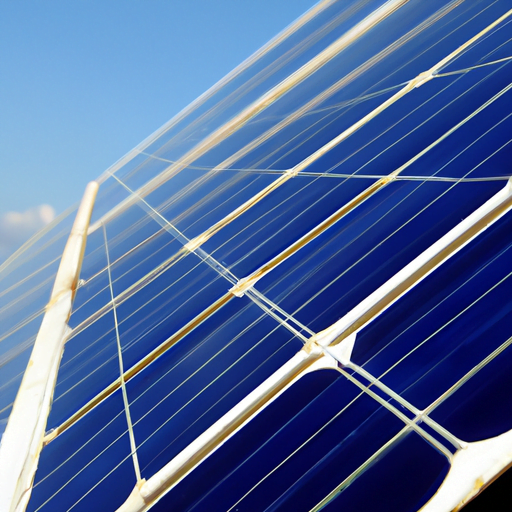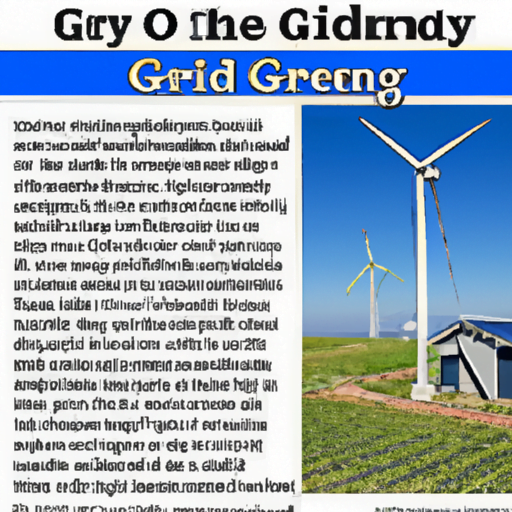Have you ever considered what it would be like to live off the grid? To disconnect from the public utility systems and rely solely on renewable energy sources? It may seem like a far-fetched idea, but the potential for converting from on-grid to off-grid living is certainly worth exploring. In this article, we will delve into the benefits and challenges of off-grid living and discuss the steps involved in making the transition. Whether you’re an environmentally-conscious individual looking for a sustainable lifestyle or simply seeking to reduce your reliance on traditional energy sources, there is much to learn about the potential of off-grid living.
Living off the grid means relying on renewable energy sources, such as solar or wind power, instead of being connected to public utilities. This lifestyle allows individuals to become self-sufficient, generating their own electricity, harvesting rainwater, and managing their waste. By doing so, they can reduce their environmental footprint and achieve a greater level of independence. However, converting from on-grid to off-grid living is not without its challenges. It requires careful planning, investment in renewable energy systems, and adaptation to a different way of life. In the following paragraphs, we will explore the potential benefits and considerations of making this transition.
In the journey towards off-grid living, there are numerous advantages to be gained. Firstly, you can significantly reduce or even eliminate your utility bills, as you would no longer be reliant on the public energy and water systems. This can lead to substantial long-term savings and financial freedom. Secondly, by relying on renewable energy sources, you are contributing to a greener planet by reducing your carbon footprint. Additionally, living off the grid offers a sense of self-sufficiency and resilience, as you are not subject to power outages or water shortages that may affect those connected to the grid. In the upcoming sections, we will discuss the practical aspects and steps involved in converting to off-grid living.

Exploring the Potential: Converting On-Grid to Off-Grid Living
Understanding Off-Grid Living
Living off the grid refers to the lifestyle where individuals or households choose to disconnect from the traditional power grid and instead generate their own electricity and meet their basic needs through alternative means. This encompasses relying on renewable energy sources, managing water supply, waste, and sanitation independently, and ensuring food security. While the idea of living off-grid might sound unconventional, there’s an increasing interest in this lifestyle due to the desire for self-sufficiency and sustainability.
The Desire for Independence
There are several reasons why individuals and families are drawn to off-grid living. One primary motivation is the desire for independence. By generating their own power and meeting their basic needs, people become less reliant on external resources, infrastructure, and societal norms. This pursuit of self-sufficiency allows individuals to have greater control over their lives and reduce their ecological footprint.
Challenges and Considerations
While the idea of living off the grid sounds appealing, it comes with its own set of challenges and considerations. One of the primary concerns is the initial cost of setting up an independent system for generating electricity, managing water supply, waste, and sanitation, as well as ensuring food security. These upfront costs might deter some individuals from embarking on an off-grid lifestyle. Furthermore, depending on the location, obtaining legal permits and satisfying building regulations can pose additional challenges.
Assessing Energy Needs
Before delving into off-grid living, it’s crucial to assess your energy needs. Understanding how much energy you consume on a daily basis is essential in determining the size of the renewable energy system you will need. Start by analyzing your past electricity bills to get an idea of your average consumption. Consider factors such as the number of household members, energy-intensive appliances, and climate conditions that might affect your energy usage. By accurately assessing your energy needs, you can design a renewable energy system that caters to your specific requirements.
Harnessing Renewable Energy Sources
Renewable energy sources such as solar, wind, and hydro power are the cornerstones of off-grid living. Solar panels, for example, can convert sunlight into electricity, which can be stored in batteries for later use. Wind turbines harness wind energy and convert it into electrical power. Similarly, hydro turbines can generate electricity by harnessing the power of flowing water. By investing in these renewable energy sources, you can achieve a self-sustainable energy system that can power your home and meet your daily needs.
Designing a Self-Sustainable System
When converting to off-grid living, it’s vital to design a self-sustainable system that meets your energy requirements. This entails determining the size and capacity of renewable energy generators, optimizing the efficiency of energy usage, and incorporating energy storage solutions. Additionally, setting up an inverter system to convert direct current (DC) from renewable energy sources into alternating current (AC) that can power your household appliances is essential. By carefully designing your system, you can ensure a reliable and consistent power supply for your off-grid lifestyle.
Water Supply and Management
Apart from electricity, water supply and management are crucial aspects of off-grid living. Depending on your location and rainfall patterns, sourcing water might require digging wells, collecting rainwater, or utilizing nearby natural water resources. Implementing sustainable water management strategies such as installing water filtration systems, water conservation practices, and utilizing greywater for non-drinking purposes can help meet your water needs and ensure long-term sustainability.
Managing Waste and Sanitation
Living off the grid also necessitates finding sustainable solutions for waste management and sanitation. Composting toilets, for instance, can reduce water usage and provide organic fertilizer for gardening. Recycling and reusing waste materials, such as plastic bottles or cans, can help minimize waste disposal. Implementing a well-designed septic system that complies with environmental regulations is essential for maintaining hygiene and minimizing the impact on the surrounding ecosystem.
Ensuring Food Security
Food security is an integral part of off-grid living. By growing your own food, you can have control over the quality, variety, and sustainability of your diet. Utilizing permaculture techniques, such as creating food forests or incorporating raised garden beds, can maximize the yield of your crops. Additionally, preserving surplus produce through canning or dehydrating ensures a steady food supply throughout the year. By taking charge of your food production, you not only achieve self-sufficiency but also reduce your reliance on external food sources and minimize your carbon footprint.
Conclusion
Exploring the potential of converting from on-grid living to off-grid living offers a pathway toward self-sufficiency, sustainability, and independence. While the initial challenges and costs may seem daunting, understanding your energy needs, harnessing renewable energy sources, designing a sustainable system, managing water supply, waste, and sanitation, and ensuring food security can help create a thriving off-grid lifestyle. By embracing this alternative way of living, you can reduce your ecological footprint, be less reliant on external resources, and pave the way for a more sustainable future.





